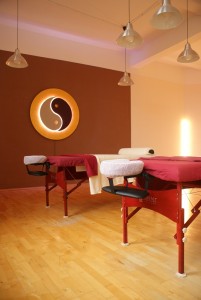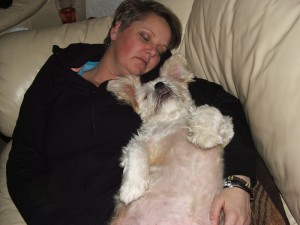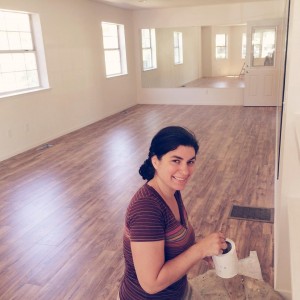Introduction by Virginia Eaton —
In last week’s blog, I talked about massage as being good for the body and mind.
Many of my readers had questions about other types of bodywork, and I solicited my friend and fellow health practitioner, Ruth Smiley, to talk about Cranial Sacral Therapy (CST).
I have experienced CST by itself and in conjunction with massage — to great benefit. In my experience, this very gentle type of bodywork encourages the body to unwind tensions over the hours following treatment, and I often don’t feel a significant shift until the morning when everything just seems to be working better.
 Cranial Sacral Therapy: A Gentle Alternative To Massage
Cranial Sacral Therapy: A Gentle Alternative To Massage
Written by Ruth Smiley —
The body is brilliant at restoring its balance and suppleness over and over again as we go through changes in life. The mecca or epicenter of this innate intelligence to revive and maintain our internal equilibrium comes from the central nervous system, and its unrelenting vigilance to protect us from illness and atrophy, both of the mind and body.
The cerebral spinal fluid (CSF) cycles through the central nervous system several times a day, safeguarding the many fragile and essential functions of the brain. As we age, the quantities of CSF tend to lessen, and a cycle rate slows down.
You can enhance your health and productivity by eating a wholesome diet, exercising regularly, sleeping properly, and keeping stress at bay by leading a healthy, happy life.
 Working cooperatively with the aging process can be harmonious and even enjoyable as we explore the habits and routines around how we care for ourselves.
Working cooperatively with the aging process can be harmonious and even enjoyable as we explore the habits and routines around how we care for ourselves.
Another way to promote the longevity of our body and mind is through Cranial Sacral Therapy (CST). CST is a light bodywork technique applied by a skilled practitioner who is well versed in the bodily anatomy that composes the central nervous system, its membranes, bones and fluids.
Cranial Sacral Therapy helps increase the volume of CSF, thereby helping the central nervous system behave more youthfully and with greater energy to achieve its many tasks.
Some of the highlighted behaviors of productive turnover of CSF are strengthened connective tissue and character of skin, improved muscle elasticity, nutrient absorption, and enhanced immune and endocrine activity (Morgan, 2012). As a gentle hands-on therapy, CST is a wonderful way to boost the many efforts we make everyday to balanced, and at our best.
 Unlike massage, when you see a Cranial Sacral Therapist, wear comfortable clothing as you relax on the massage table.
Unlike massage, when you see a Cranial Sacral Therapist, wear comfortable clothing as you relax on the massage table.
Sessions can be either 45 minutes or 75 minutes, and the therapist stands or sits at various points of your head, torso or feet, applying a light touch, and may at times support the position of your spine and limbs as tissues soften and restrictions release.
Everyone’s experience of cranial sacral is different: you may feel relaxed, or experience an unwinding sensation as releases occur and the body’s self-correction mechanisms are revived.
 Ruth Smiley is an energetic advocate for the art of balanced living in a modern world.
Ruth Smiley is an energetic advocate for the art of balanced living in a modern world.
Through the lens of classical Ayurvedic medicine, she offers clients and students a well-rounded experience of good health through the arts of food preparation, self-care practices, Pancha Karma, skin care, cranial sacral, and energetic healing.
Ruth also teaches Zumba Fitness Dance at Class, The Body Pastiche, bringing a fresh and authentic perspective on individualized health and wellness.
In practice for over 17 years, Ruth never tires of learning and refining her skills, and is currently studying for a BA in Complementary and Alternative Health.




